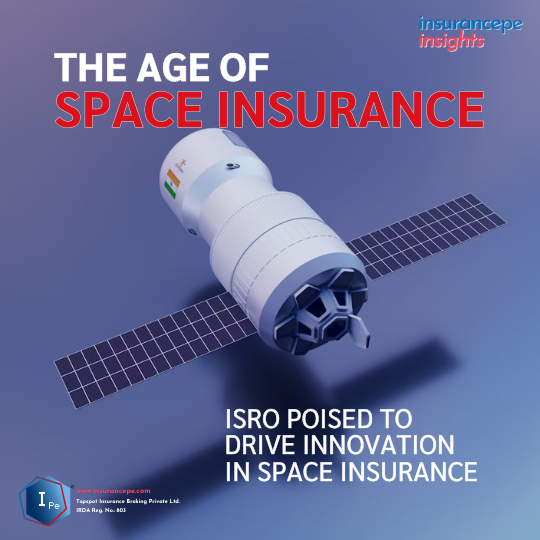
India’s space sector has rapidly moved from a government-only playground to a crowded, commercial ecosystem. With hundreds of startups, increasing private launches and ambitious national missions, the financial stakes are enormous.
Satellites and missions cost hundreds of crores; a single failure can wipe out budgets, delay services and expose companies, clients, and ultimately the nation, to large losses. Insurance is the mechanism that turns that tail-risk into a manageable business decision.
For decades ISRO routinely did not insure domestically launched missions. The reason was simple: ISRO is a government agency and, historically, the State absorbed the financial risk.
Paying large insurance premiums to commercial markets would mean shifting public funds to private insurers when the government could simply cover losses internally. Practically, the premium levels demanded by international markets (sometimes 10–25% of mission value in earlier eras) made commercial insurance uneconomical for state-funded science missions.
This stance changed for launches conducted from foreign launch sites or under commercial arrangements. For satellites launched abroad (for e.g. from Kourou), ISRO did not rely on the government, and has taken insurance, typically arranged by New India Assurance with international reinsurance. These policies covered satellite physical loss and attracted capacity from Lloyd’s and large reinsurers.
As missions grow increasingly complex and expensive, the chance of failure could result in very large losses. Failed or damaged payloads demonstrated how expensive recovery and repeat efforts can be.
An example of this was the INSAT-4C launch of 2006. Launched aboard the Geo-synchronous Satellite Launch Vehicle GSLV-F02, the mission which cost Rs. 256 crores failed when the rocket crashed into the Bay of Bengal. Because this launch was from India, the mission was not insured. Such shocks, combined with the growing commercialisation of launches and satellite services, made insurers, ISRO and policymakers re-evaluate the economics of buying cover for domestic launches.
India is party to international space treaties that make the launching state liable for damage caused by its space objects on Earth (absolute liability) or elsewhere (fault-based). For private launch operators, this translates into a requirement to hold third-party liability insurance or equivalent financial assurance.
Indian regulator (IN-SPACe) and the Notified Guidelines under the Space Policy empower authorities to require third-party cover and even to name the Republic of India as co-insured to protect the State’s international liability exposure.
New India Assurance has been the domestic insurer most frequently associated with Indian satellite launches, particularly for missions launched from foreign soil. Historically New India led consortia and worked with international reinsurers to place cover for missions like INSAT and GSAT series where external launch providers required insurance.
This public-sector expertise was crucial when international underwriters needed local counterparties and helped India participate in the global space insurance market.
As risks rose and reinsurance rates stabilised with the increasingly reliable launch record of ISRO, discussions emerged about insuring indigenous launches. ISRO began conversations with insurers about insuring launches from Indian soil and about in-orbit liability.
Private insurers (e.g., Tata AIG) entered the market offering in-orbit third-party liability cover; New India continued to provide launch and pre-launch solutions for foreign-launched missions. These steps signal a maturing domestic supply of space insurance products beyond ad hoc international placements.
ISRO has explicitly flagged insurance and underwriting in its “Research Areas in Space 2025” document. The agency is exploring new underwriting models for mega-constellations, insurance for space tourism, and mechanisms to address space-debris liabilities.
ISRO’s research aims to inform loss models, MPL (Maximum Probable Loss) calculations and the potential for a national or international risk pool, ideas that would change how India allocates catastrophic space risk.
India’s space ambitions have outgrown the old model of state self-insurance. As launches commercialise and private operators scale, insurance becomes not a luxury but a necessity, to protect investors, safeguard the State from liabilities, and make space activity sustainable.
This blog post is brought to you by the minds at insurancepe!
Got questions or doubts about anyone insurance?
Need advice or help understanding your insurance needs?
Want the best bang for your buck when buying insurance?
We got you!
Reach out to us at:
Whatsapp/Phone: 89779 18030
E-mail: contact@insurancepe.com
Visit us at www.insurancepe.com